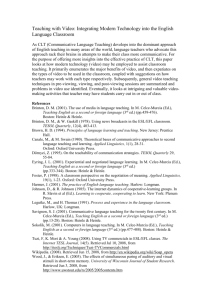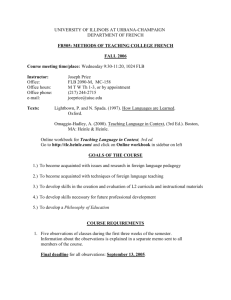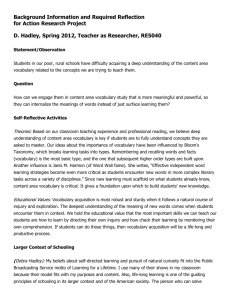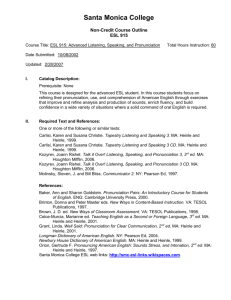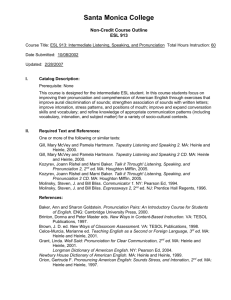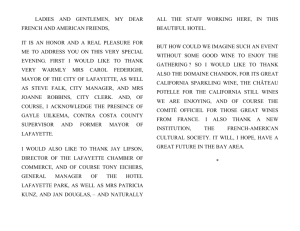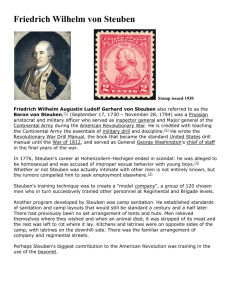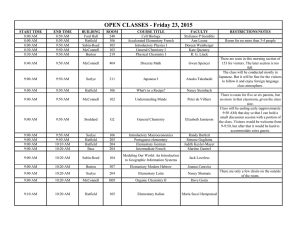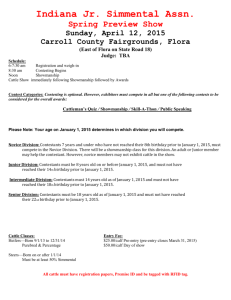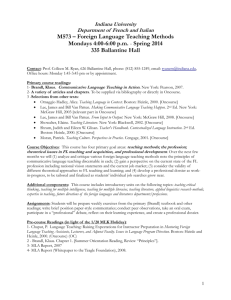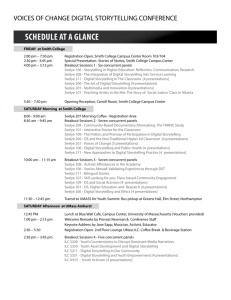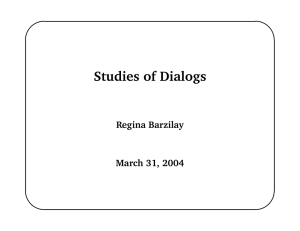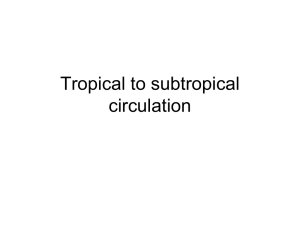Seelye*s Seven Goals of Cultural Instruction
advertisement
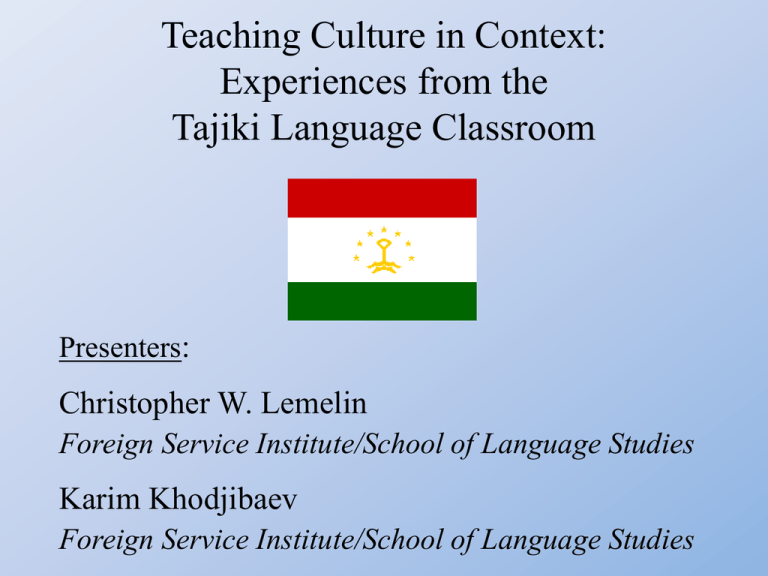
Teaching Culture in Context: Experiences from the Tajiki Language Classroom Presenters: Christopher W. Lemelin Foreign Service Institute/School of Language Studies Karim Khodjibaev Foreign Service Institute/School of Language Studies Teaching Culture in Context: Some Background from Different Pond, Different Fish, no. 10 (March 2004) What do we (at FSI/SLS) mean when we say culture? Big-C Culture vs. little-c culture • Objective culture • MLA culture (Music, Literature, Arts) • “Products” (Standard 2.2 of Standards for FL Learning) • Subjective culture • BBV culture (Behaviors, Beliefs, Values) • “Practices” (Standard 2.1 of Standards for FL Learning) Foreign Service Institute / School of Professional and Area Studies Foreign Service Institute / School of Language Studies Seelye’s Seven Goals of Cultural Instruction • • • • • • • The Sense of Culturally Conditioned Behavior The Interaction of Language and Social Variables Conventional Behavior in Common Situations Cultural Connotations of Words and Phrases Evaluating Statements about a Society Researching Another Culture Attitudes toward Other Cultures H. Ned Seelye, Teaching Culture (Chicago, IL: National Textbook Company, 1984) Galloway’s Convention Clusters Function-determined conventions vs. Context-determined conventions Stages of a Student’s Cultural Proficiency (adapted from Bennett, Durocher) Methods suggested by Omaggio Hadley • Mini-lecture • Native Informants • Audio materials – interviews, dialogs • Video materials – dialogs, staged encounters, film, YouTube • Role play Alice Omaggio Hadley, Teaching Language in Context (Boston, MA: Heinle & Heinle, 1993) Integration strategies suggested by Lafayette (some things to keep in mind) • Plan cultural activities and integrate them into lesson (don’t teach culture “on-the-fly”) • Use target language for cultural learning (don’t separate culture learning from language learning) • Use grammar content with cultural context (use appropriate cultural topic as basis for language practice) • Teach vocabulary around a cultural context (use cultural clusters of words, teach connotative meanings) • Use experiential learning (not “facts only”) (encourage student curiosity, don’t just say—do it this way) Robert Lafayette, “Integrating the Teaching of Culture into the FL Classroom” (NECTFL, 1988)


